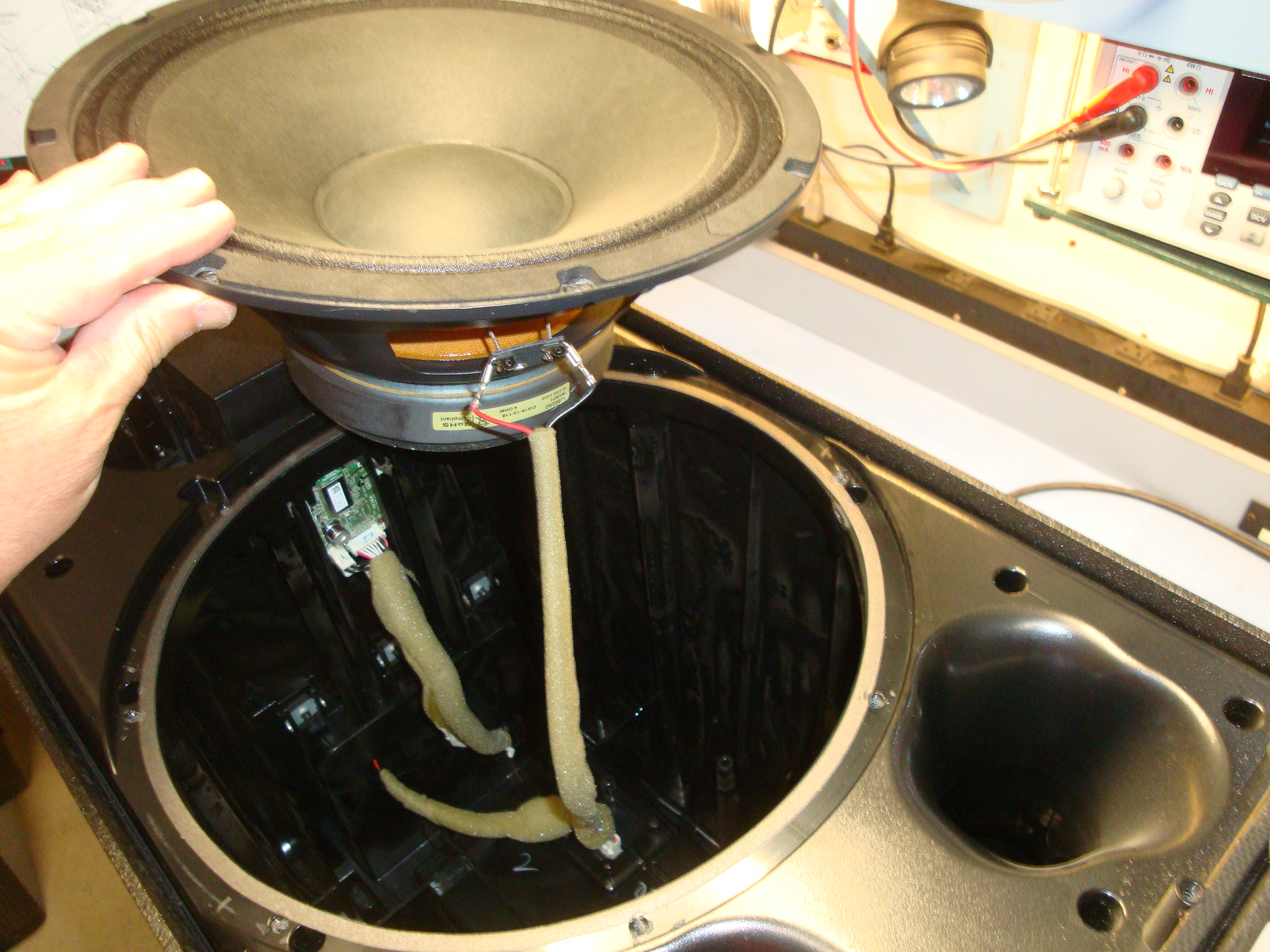
Speaker Damage – A Short Lesson
Greeting Dynastar Fans:
Thanks for visiting our website. Today we teach a short lesson on loudspeaker damage. How does it happen? Well through out the years we have replaced many HF (Tweeters) and LF (Woofers) drivers, crossovers, mid-range drivers and you name it within the proverbial ‘Speaker cabinet’. This includes Bass amps, Guitar amps, PA Cabs–both powered and non-powered, monitor speakers, vintage stuff, etc. Whew!
So a common question from customers is whether to repair the actual driver or replace. Well, regarding woofers, unless they are high cost replacements or rare finds, nowadays it really isn’t worth it, and simply buying new washes out to the same cost. It’s a lot of labor and tooling to ‘re-cone’. Back in the day a company known as Waldom used to sell rebuild kits to do this, but you really needed space and a separate operation for that type of work. Unless you are doing many per week, it is best to send them off to small companies that do this; but again, buying new pretty much becomes a wash when all said and done.
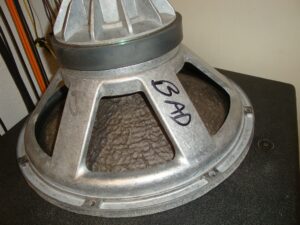
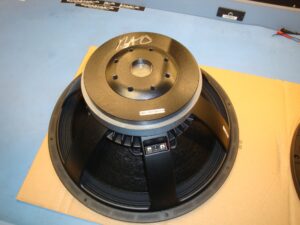
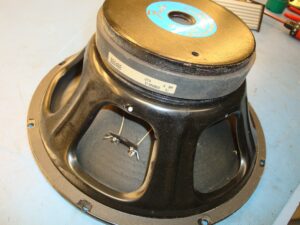
Now we do often rebuild tweeters or more accurately described — ‘compression drivers’ used in high powered public address and DJ systems. This task requires special skills to replace what is called the ‘diaphragm’. Lesser cost PA cabinets will not have the option to do this, but simply will require replacing the whole tweeter. If the original tweeter assembly is not available, you will have to use another type that will be audibly compatible and mechanically fit the cabinet. If the unit is one of a PA speaker cabinet pair, you’ll need to replace the other tweeter in the working cab as well so that both PA cabinet sound characteristics match when the fix is made, otherwise one cab may sound brighter than the other. I know.. complicated.
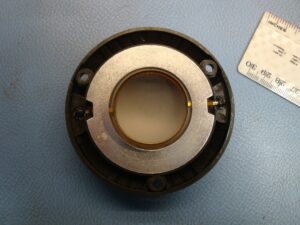
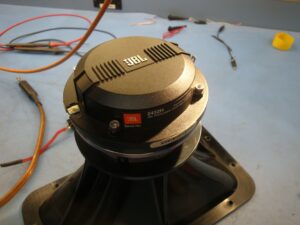
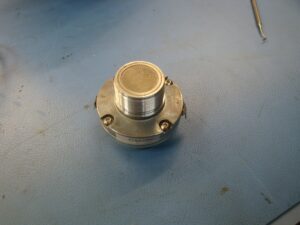
The woofer build. A woofer has a few parts. The basket (or frame) which holds the whole speaker together. Then we have the cone. This is the big cone shaped black paper part that excurds back and forth creating sound which changes the pressure in the air surrounding it. That quick vibrating pressure change does the same to your ear drum, and voila! SOUND! In the middle of the cone is called the ‘Apex’. Kids like to push these in and deform them to see what happens. The ‘spider’ aligns the cone in place with what is called the voice coil. All these parts move in unison with each other. Without getting super technical, an electrical audio signal current (from the power amplifier) flows through the voice coil. Mounted in the basket is a magnet which repels the voice coil connected to the cone mechanically moving it very fast as the electrical current levels change. The vibrations can move the cone several hundred times per second. Pretty impressive really. They do have a speed limit though– enter the tweeter.
Now the tweeter works in a similar manner except they are designed to handle much higher speeds, so they use a diaphragm instead of a cone. The diaphragms can be made of cloth or metal. The same principal for woofer operation is also understood for moving a tweeter diaphragm in a similar fashion. Eventually they too have a speed limit and can vibrate as fast as 20,000 cycles per second. WOW!
Mid-range drivers also can use compression type drivers or small woofers that can handle mid-range frequencies. Okay troopers.. let’s move on to damage modalities.
There are basically three ways raw loudspeakers/drivers get damaged. Let’s address woofers first. Woofers can be damaged by: 1) Over excursion 2) Blown voice coil 3) Mechanical damage. Let’s address each one.
Over excursion: When the woofer experiences very high power and the voice coil is designed to handle it but the cone is not, it can ‘bottom out’ as the industry calls it. So what happens is the voice coil excurds so far that it actually strikes the back of the cage where the end of the magnet is, damaging the sensitive voice coil deforming it. As it excurds back out during this erratic performance, it rubs up against the gap that it is supposed to freely move through. The tolerances of this gap are very small.
Over excursion: When you press on the cone gently, you can feel it rubbing, and it’s shot. If the spider breaks loose from the adhesive or gets old and wears out (remember it helps align the cone) it to can cause the same failure. This is more common in high compliance woofers (more springy) vs. pro-audio woofers which are very stiff. Below we see the light brown spider, with the voice coil in the middle, both attached to the cone.
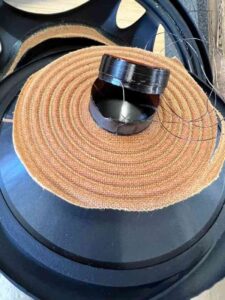
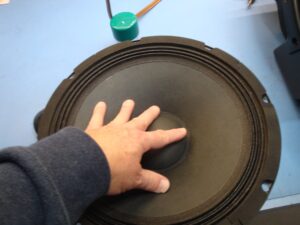
Blown voice coil. Yupp.. an oldie but a goodie. When the power fed into the woofer is too much, the wires in the voice coil overheat and fail. The wires break open and there is no electrical flow and the driver is now shot. Like this:
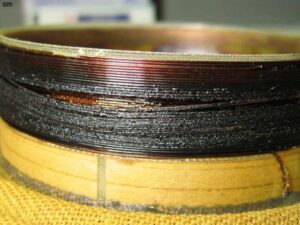
Another way a blown voice coil happens (regarding compression diaphragms), is if the cab has a passive crossover inside. We don’t see much of these anymore with powered loudspeakers taking over the current market, but if the crossover fails, it can feed a lot of LF power into the HF driver and burn it out immediately.
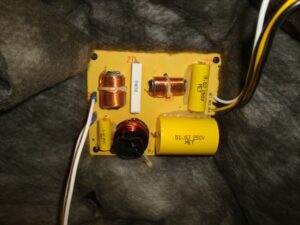
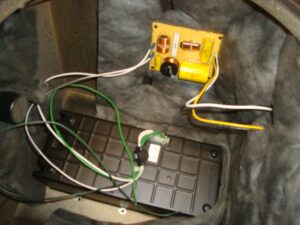
Mechanical damage: We see this all the time; rough handling of the cabinet (often damaged cabinet as well) causes the cage in the woofer to become deformed, damaged, or the magnet breaks loose or a plethora of other ways to knock the voice coil out of alignment. The driver is now shot.. Sometimes a long gigging night makes one lazy, and gear gets abused when packing up. A musician’s life I suppose.
Of course material wear out within the driver itself and eventually leads to failure too. Things just wear out, but it is truly amazing how long speakers last for what they go through.
As an interesting side note, in the past, to stop some of this, we here at the mighty Dynastar used to manufacture the patented SK-II known as the “Speaker Knife” loudspeaker protector. It was an electronic module you could install within a speaker cabinet, and at high speed would disconnect an incoming over powered signal attacking a driver and save it from damage. Later we had the rack mount LPS (Loudspeaker protection system) which was an active version.
Nowadays powered speaker cabs with built in DSP circuitry can actually measure driver stress and back off power as needed.
Please understand, that simply hooking up a PA system and using it without any study may not be the wisest thing to do. It is a good thing to read up on basic sound systems, so you don’t destroy your gear. We don’t want to make money that way.
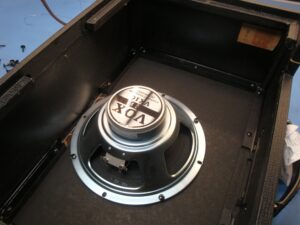
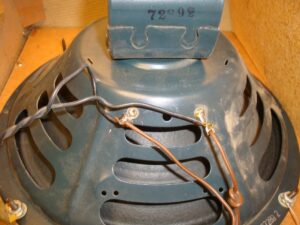
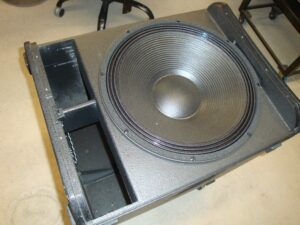
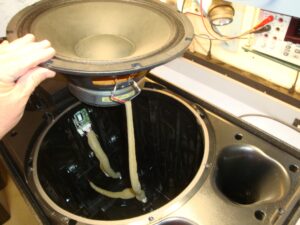
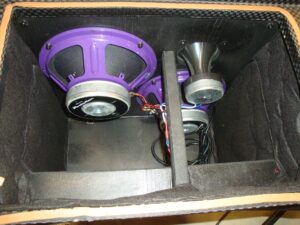
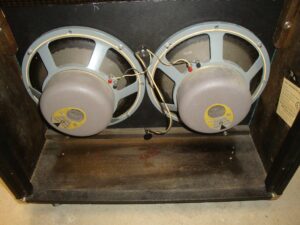
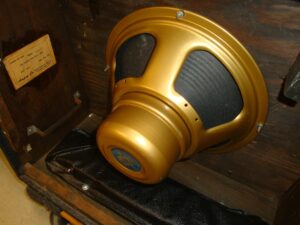
Dynaman…